TABLE OF CONTENTS
Samsung SSDs, known around the world as some of the best around, giving you prizewinning speed, lifespan, and reliability.
Not to mention that Samsung offers different versions of their SSDs for all of your needs; whether you’re a working professional or just want some good, simple storage, Samsung’s got you covered.
But all their different SSDs can get confusing at times. PRO? EVO? QVO? What do they even mean? How are they different from each other? And what exactly should you get?
Well, you’re in luck, ’cause that’s exactly what I’ll be covering in this article.
What Do the Numbers Mean?
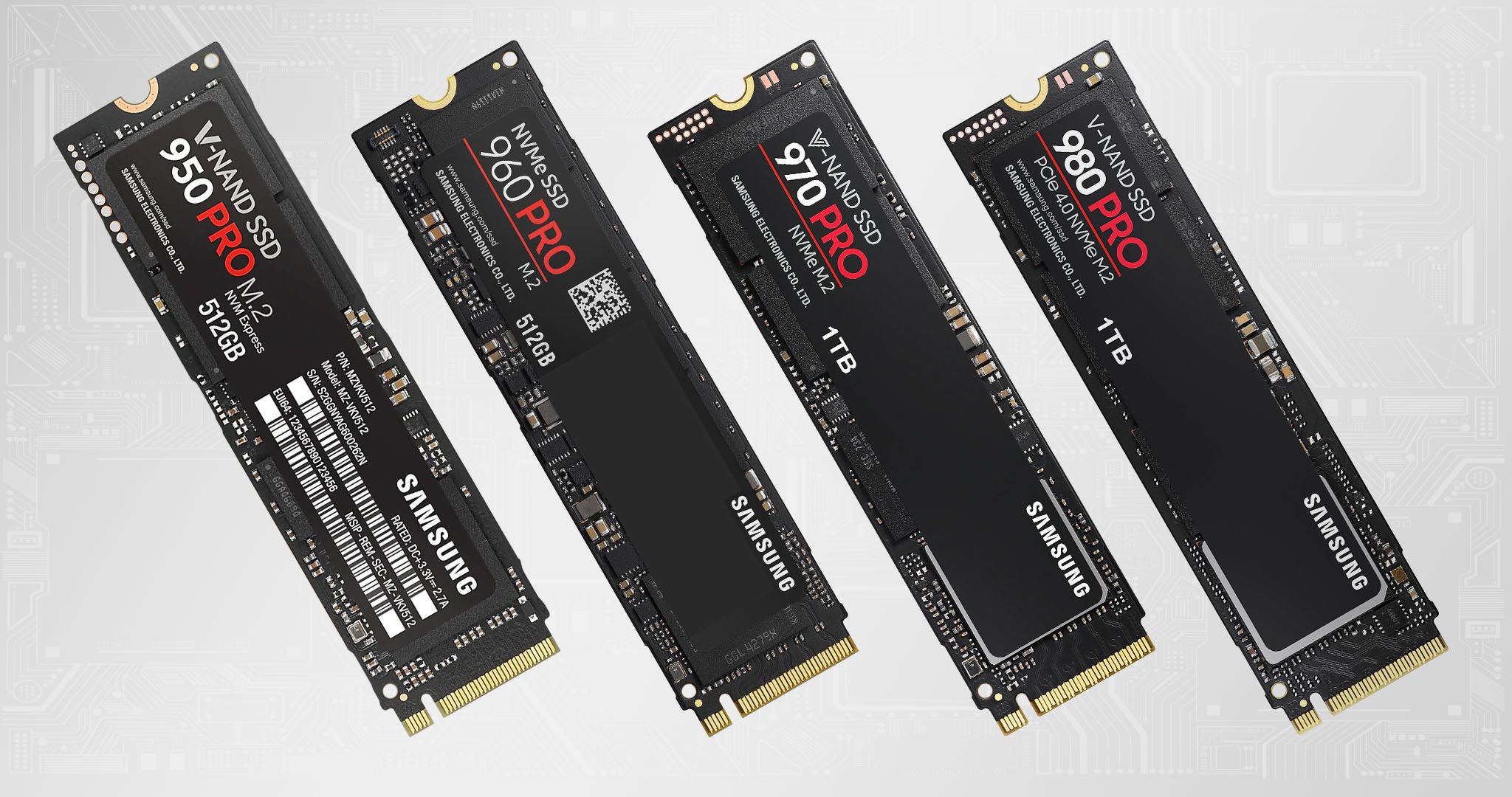
Before we get to that, though, we have to make something clear, Samsung’s generational naming scheme.
You might’ve noticed that most Samsung SSDs have a three-digit number in the name—980 PRO, 870 EVO, etc.—these numbers inform you about what generation and revision the SSD is from.
As it is right now, that’s all the first number indicates.
The two numbers after the first number indicate the revision. Higher numbers mean that the drive is newer and more advanced, lower numbers mean the opposite. These generally go as low as “X50” and as high as “X80.”
When it comes to those two numbers, bigger is better. A Samsung 980 PRO, for example, is much faster and more advanced than a Samsung 950 PRO.
So that’s the gist of what those numbers mean.
Now that we have that out of the way, we can get to the rest of the article.
What Is Samsung PRO?
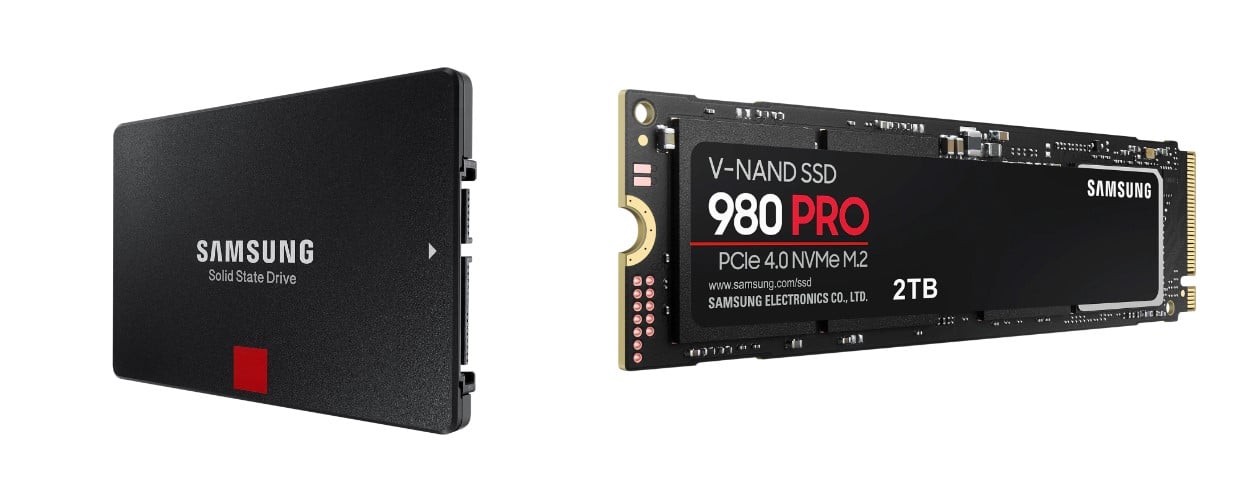
Image Credit: Samsung
Samsung’s “PRO” SSDs, like the name implies, are the cream of the crop. They’re the best SSDs they have to offer you in pretty much every metric. And they certainly have a price to match.
They also offer two different variants of their PRO tier SSDs, one a SATA based 2.5 inch SSD and the other being the newer NVMe, PCIe-based M.2 SSD.
These are what you should get if you need lots of extremely fast and stable storage.
For example, high-resolution photography/video, slow motion video, simulation data, AI training data, etc. all need high sustained speeds when it comes to storage because of the amount of data you would be writing into them.
It doesn’t matter if you have the world’s fastest drive if it breaks down and slows to a crawl the moment you transfer more than a handful of GBs.
That’s where Samsung’s “PRO” lineup excels. They’re extremely fast and, most importantly, they can maintain most of their speed when you start hammering them with tons of data for a longer time.
What Is the Samsung NVMe 980 Non-PRO Variant?

Image Credit: Samsung
One of Samsung’s more bizarre choices regarding the branding of their SSDs, the “Samsung SSD 980” is basically a stripped-down version of their 980 PRO.
And as you can imagine, it has been pretty confusing for prospective buyers. So let me clear up what the differences between the SSD 980 and 980 PRO are.
Basically, the main differences are that the SSD 980 has no DRAM cache, is using the older PCIe 3.0 interface standard, and has a larger SLC cache to compensate for all of this.
Meaning that for most normal applications, it trades blows with the older 970 EVO and EVO Plus for around the same price, but is significantly slower than the 980 PRO. It’s just a very confusing SSD.
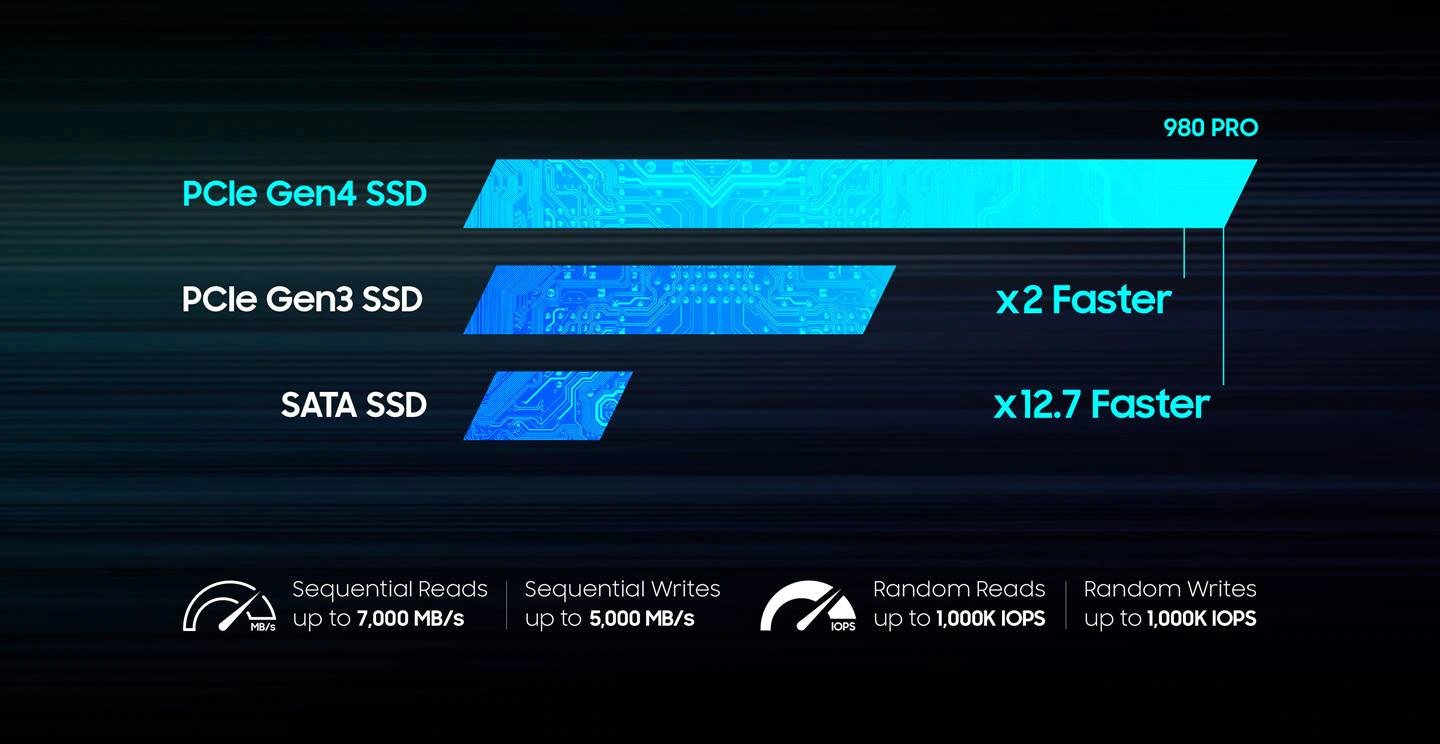
Source: Samsung
I don’t know if it’s intentional branding to mislead customers or plain ol’ ineptitude, but by all accounts, the SSD 980 is a pretty useless SSD unless you’re trying to pinch every penny. But at that point, there are other manufacturers that offer the same type of SSD for cheaper.
The one saving grace that the SSD 980 has is that because it doesn’t have a DRAM cache, it is much cooler than SSDs with one.
This means if you want to install an SSD into a very thin laptop without much cooling, the SSD 980 would perform better because it wouldn’t thermally throttle.
But then again, in such a laptop, you most likely wouldn’t be transferring tons of data around all the time anyway, so even SSDs with DRAM cache wouldn’t really fare all that worse.
So, in the end, if you don’t have the money for a 980 PRO, get a 970 EVO Plus instead of an SSD 980. It’ll give you the same speeds and maintain most of that speed far better than the SSD 980, and they’re usually around the same price.
What Is Samsung EVO?
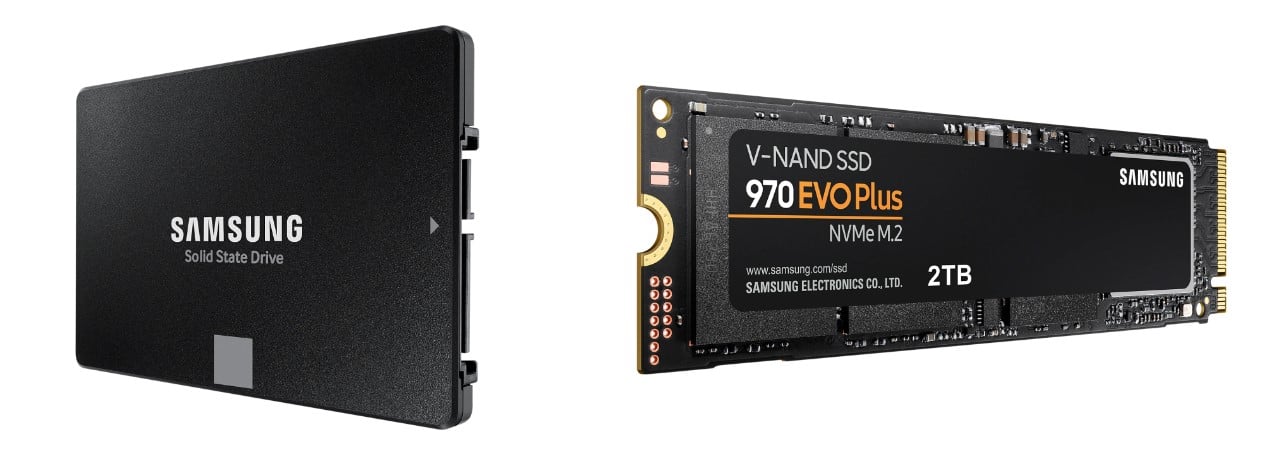
Image Credit: Samsung
The Samsung EVO lineup of SSDs are basically cut-down versions of their PRO lineup, made to be used by general consumers that don’t need all the bells and whistles that the PRO lineup provides.
They’re obviously not as fast as the PROs, but they don’t need to be. The speeds they can achieve are more than adequate for pretty much everything you need.
From gaming to productivity and everything in between, the EVOs will handle them all perfectly without much slowdown.
So unless you’re planning on transferring hundreds of gigabytes every day, the EVO will work for you just fine.
This is true for both their SATA-based and NVMe, PCIe-based EVO SSD offerings.
What Is the Samsung NVMe 970 EVO Plus Variant?

Image Credit: Samsung
As you can probably guess, it’s an improved version of the original 970 EVO. It’s as simple as that.
I’m not quite sure why Samsung didn’t simply make a 980 EVO instead of adding onto the 970 EVO and making things confusing, but it is what it is, I suppose.
Both the EVO and EVO Plus are priced similarly normally, but are actually cheaper than the base EVO nowadays, so the EVO Plus is better than the EVO in pretty much every metric. Especially when it comes to write performance, as it’s 35 – 40% faster than the EVO.
So if you’re looking to get an NVMe EVO SSD and can spare a bit more money, definitely think about getting the EVO Plus instead of the EVO.
What Is Samsung QVO?
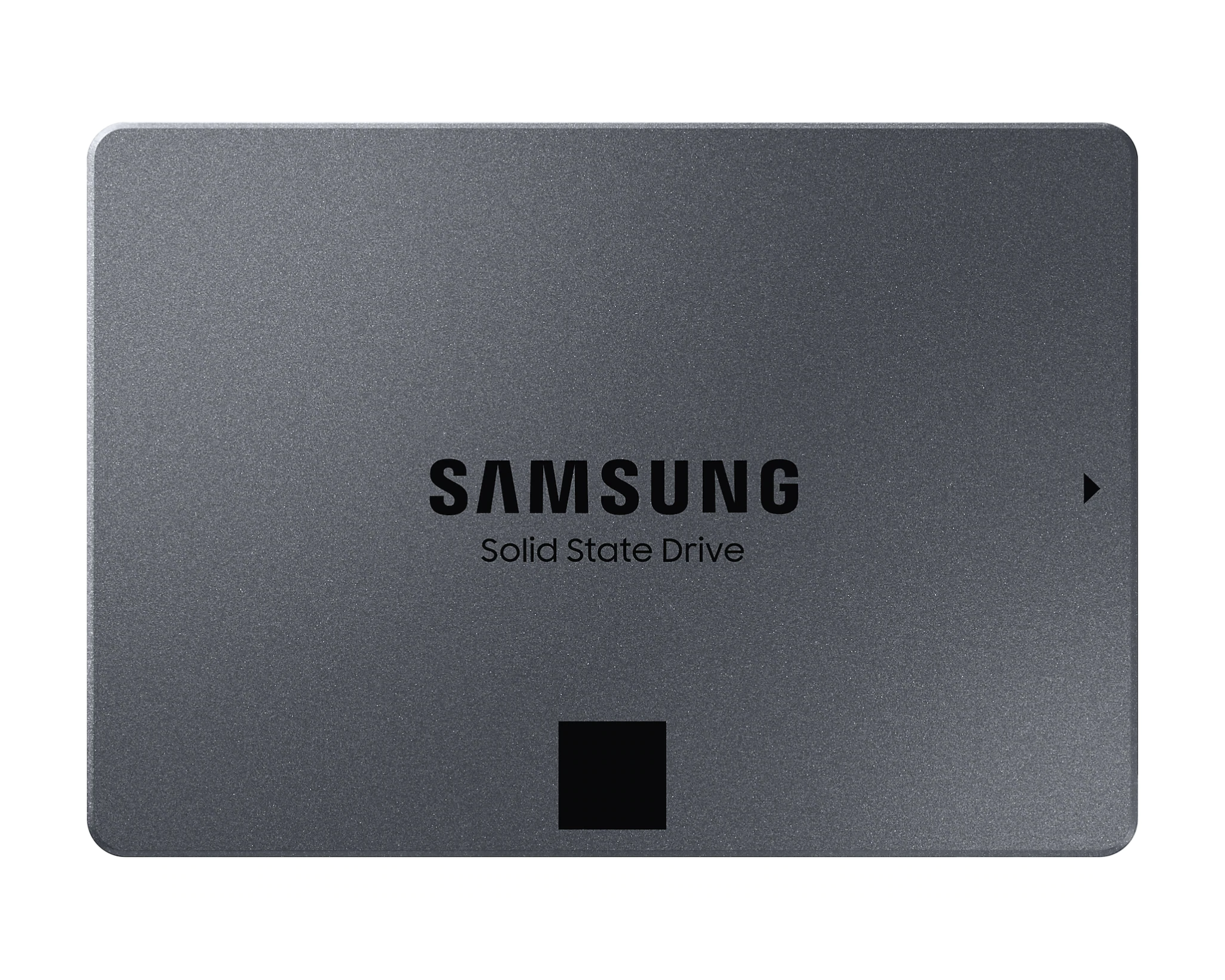
Image Credit: Samsung
And finally, QVO, Samsung’s most “affordable” offering—if you plan on getting 4+ TB SSDs, that is.
The main point of Samsung’s QVO lineup is that they’re slow as all hell when the SLC cache gets saturated, but they’re cheaper than the other offerings and have much larger size options to choose from.
So they work quite well as a backup for large amounts of data that isn’t frequently accessed. But they fall apart very quickly if you plan on reading and writing lots of data continuously.
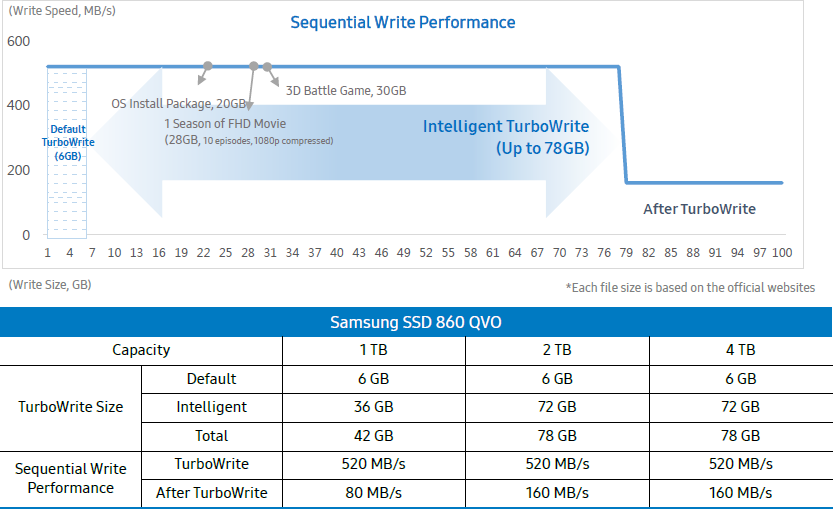
Source: The PC Enthusiast
Because of the limitations of the SLC cache, you only get 42 GBs—72 GBs if you have a drive sized above 2 TBs—of fast SSD performance before it plummets to speeds slower than even a mechanical hard drive.
Because of this, I would generally only recommend getting a QVO drive if you have the need for 2 – 4+ TB drives.
You’d be much better off getting an EVO or an EVO Plus if you don’t need that much storage—especially since they’re all around the same price nowadays anyway.
Differences Between Samsung PRO, EVO, and QVO
Cost
Considering how fast the computer storage space evolves, it’s hard to compare the cost of stuff because it might change drastically just three months down the line.
Technically, Samsung’s cheapest offering is the QVO line, followed by the EVO/EVO Plus, and then the PRO—the SSD 980 is somewhere in the middle between the EVO and PRO.
But if we go by MSRP, there’d be a huge difference between the price points. Let’s compare the price difference between some 1 TB drives, for example.
| Samsung 870 QVO | Samsung 870 EVO | Samsung 970 EVO | Samsung 970 EVO Plus | Samsung 860 PRO | Samsung 980 PRO | |
|---|---|---|---|---|---|---|
| Release Year | 2020 | 2021 | 2018 | 2019 | 2018 | 2020 |
| MSRP | $129.99 | $129.99 | $449.99 | $249.99 | $479.99 | $229.99 |
As you can see, it makes no sense. That’s because SSD prices are pretty much always in flux.
Whenever something new and shiny gets released, it’s usually very expensive, but then it quickly falls down to a much more reasonable level.
Let’s take a look at the price points those SSDs are actually going for these days.
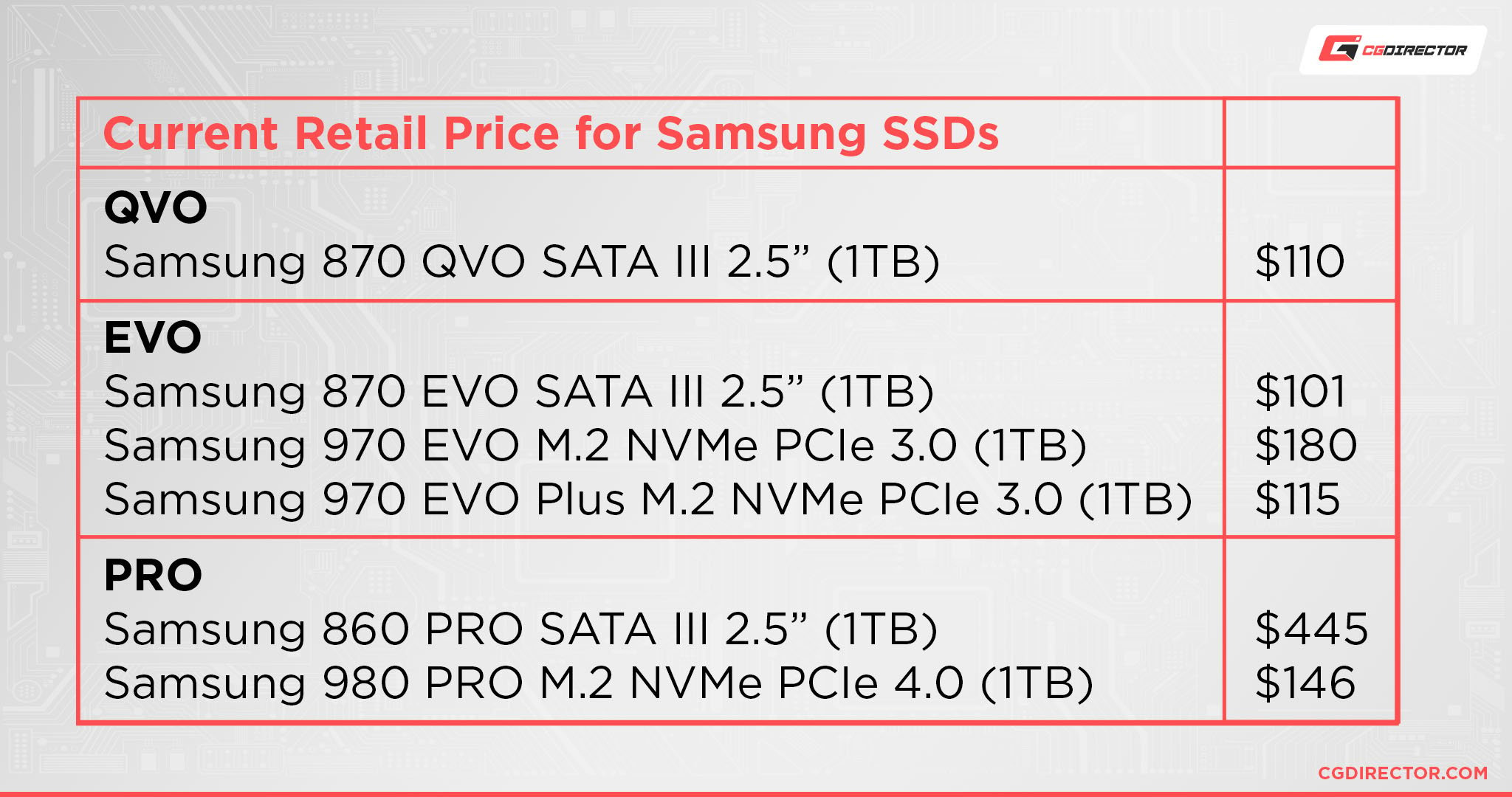
Older SSDs like the 970 EVO or the 860 PRO are eclipsed in performance by their newer, better counterparts, yet they are significantly more expensive than the newer models.
This at first makes no sense, but there is a reason for it. Part availability.
Think about it, why would Samsung waste precious resources manufacturing older, slower components when their newer SSDs are better in every way and are cheaper to manufacture—now that the process has matured?
And the consumers themselves move on to the bigger and better hardware, so the demand for older drives like the 860 PRO or the 970 EVO go down massively.
So there’s no incentive to manufacture more of them and reduce costs for the small number of people that still use them.
The computer storage space evolves fast, but it can abandon older hardware fast as well.
So if you want these sorts of older drives, your best bet would be to look at other manufacturers. Because paying close to half a grand for a 1 TB, SATA SSD is incredibly dumb.
Lifespan
This is another aspect that is hard to compare.
Sure, you can just compare the write endurance between SSDs, but that’s a very incomplete way of looking at it.
Depending on how you use the drives, even a QVO drive can last as long as a PRO drive. Even with the PRO having double the write endurance of the QVO drive.
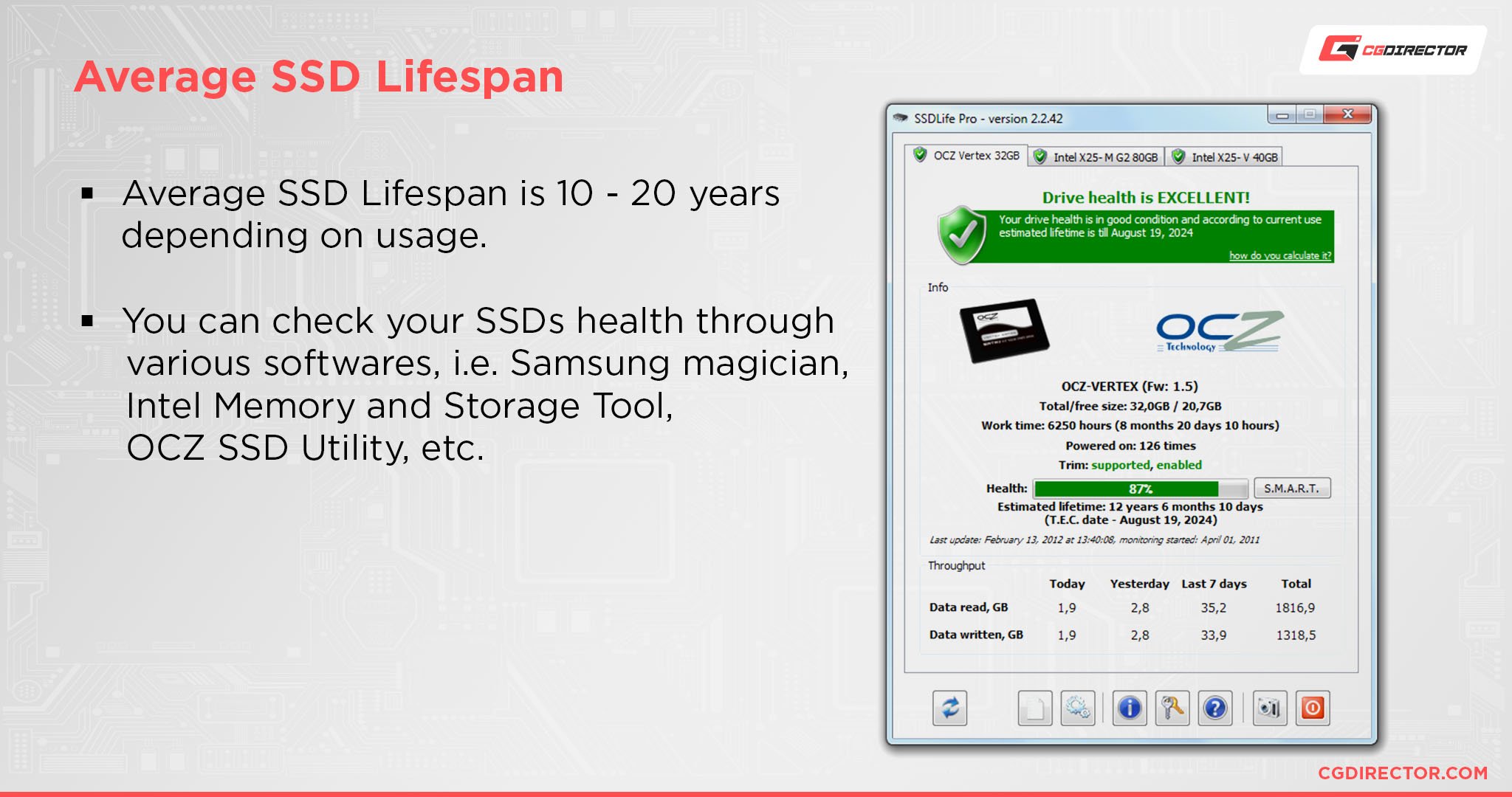
So it’s not about how long they last, it’s about how you’re going to use them.
Will you be pummeling your drive with massive dumps of data all day long for months or years?
Get an EVO/EVO Plus or PRO drive. Not only will their better write endurance help your drive last longer, but their much faster base speeds after saturating the SLC cache will keep you from pulling your hair out at the QVO drives.
Will you just be storing lots of data without accessing them much?
Get a QVO or EVO/EVO Plus drive. Both options cost around the same now, and both options will do the job just fine.
I personally recommend going with an EVO/EVO Plus because even if you won’t be accessing the data all that much, having it be speedy when you access it is nice for your quality of life.
Will you just be using the SSD normally, storing a combination of large and small files?
In that case, get an EVO/EVO Plus or a PRO if you want the best of the best.
But considering that most applications can’t even use the full speeds of the PRO drives, an EVO Plus drive would be more than enough for everything you need for years to come.
Performance
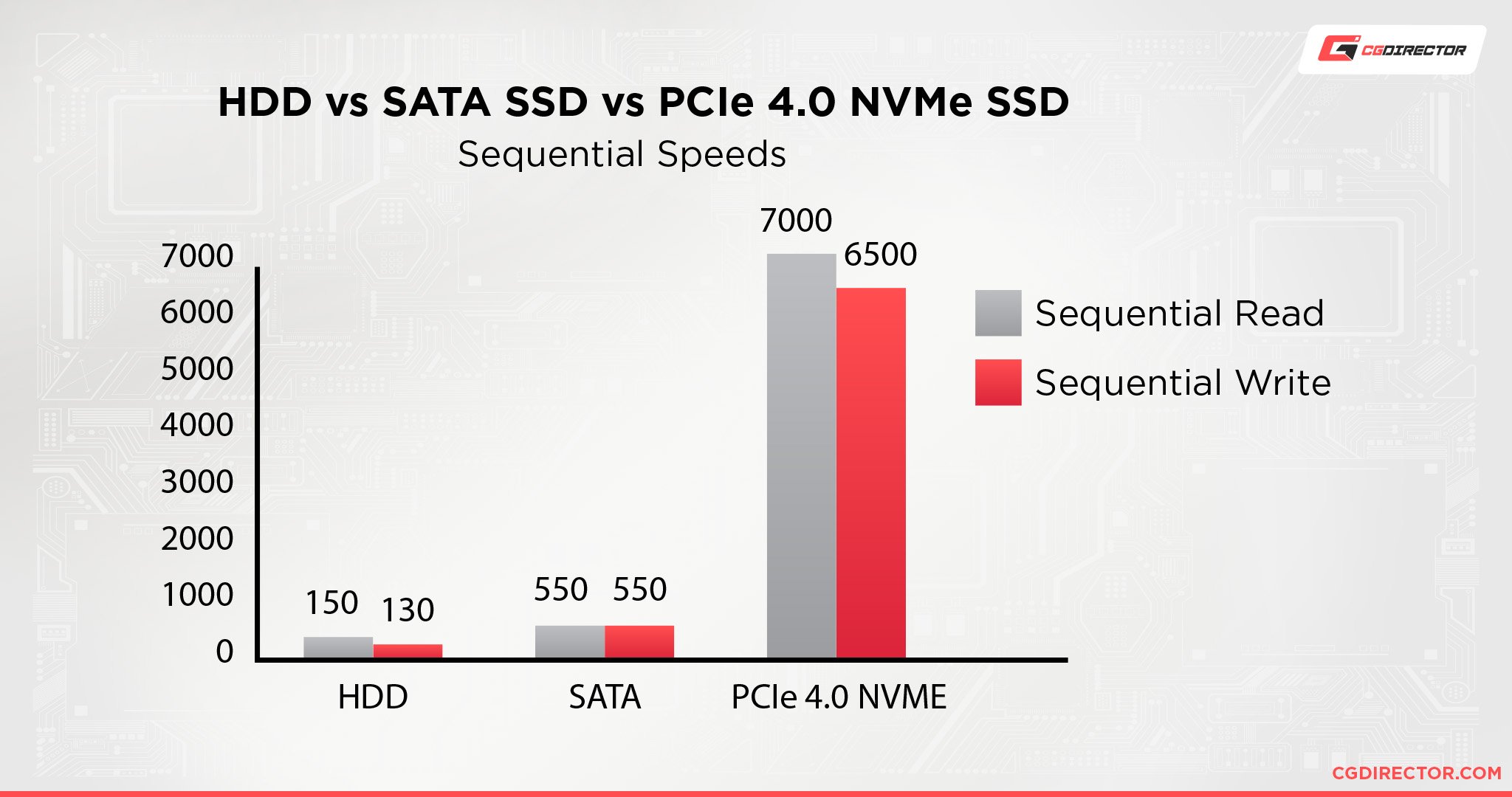
Performance is one of the easier things to compare between the different models.
It basically goes like this, QVO SSDs are slower than EVO, and EVO SSDs are slower than PRO SSDs.
This is not as apparent with the SATA-based SSDs because they are limited by the SATA interface speed limitations. So when it comes to SATA drives, QVO, EVO, and PRO all perform at around the same peak speeds, 550 MB/s.
The differences show up when they have to accommodate a sustained load. After the QVO drives saturate their SLC cache, they’ll slow down immensely. But the EVO and PRO drives will chug on and give you speeds far closer to their peak speeds.
Physical Format
There’s no great physical difference between the PRO SSDs and the non-PROs. As it is right now, Samsung offers both EVO drives and PRO drives as SATA, 2.5-inch drives and NVMe, PCIe, M.2 drives.
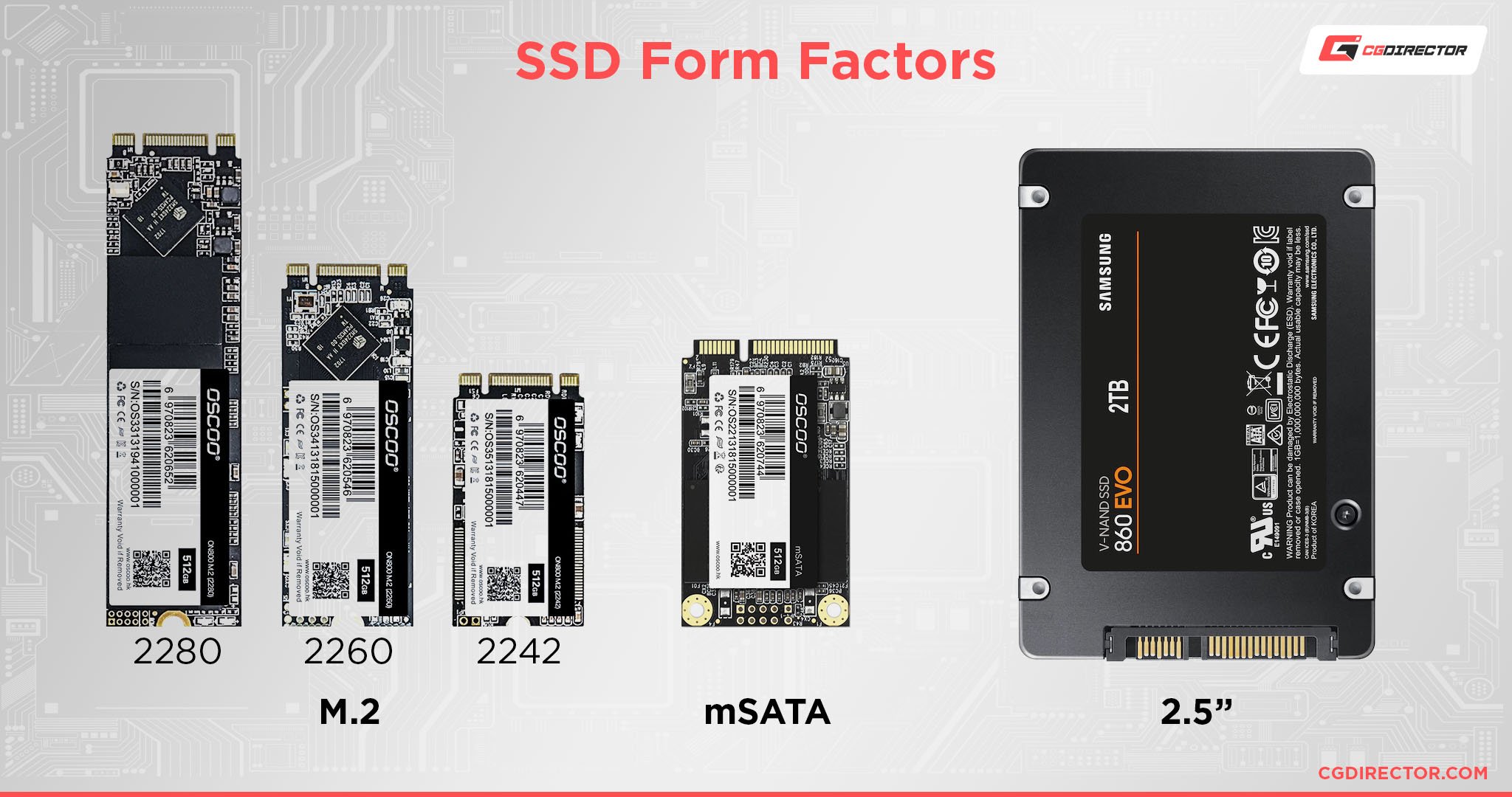
The only outlier are the QVO drives. Samsung doesn’t offer QVO drives in the NVMe, PCIe, M.2 format.
QVO drives only come in the SATA, 2.5-inch format. This makes sense as the QVO drives can’t really make use of the headroom afforded by switching to NVMe/PCIe, but I assume that in time Samsung will transition the QVO line to the M.2 format as well.
What Should You Get?
And now for the big question. What should you get?
Simple, if you want an M.2 drive. Get the Samsung 970 EVO Plus. If you want a 2.5-inch, SATA drive, get the Samsung 870 EVO.
Both of these drives perform admirably on pretty much every single test out there. You can literally throw whatever you want at it, and they’ll do it.
You only need to spend more on the PRO drives if you actually need those high peak speeds and sustained speeds.
If you’re doing AI work, storing and reading/modifying extremely high-quality photos/videos, reading and writing simulation data, etc., then you would benefit from a PRO drive. Otherwise, it’s just a waste of money.
And if you want a drive with lots of space that you can use as a backup, get a QVO drive. For infrequent backup needs, they’re more than fast enough.
Though I personally would still go for multiple EVO drives instead of one big QVO drive.
FAQ
Which Is Better, EVO or QVO?
It really depends on what your use cases are.
If you need a good SSD with solid performance, reliability, and longevity, get the EVO.
If you want something cheap that can store a lot of files and is still fast—but not as fast when it comes to large files—get the QVO.
In general though, as long as you don’t need 4+ TBs of storage on a single drive, I recommend getting the EVO.
How Long Will a Samsung QVO SSD Last?
I can’t really say. It all depends on how you use it.
If you read and write tons of data off of the drive every day, it’ll probably last around 3 – 5 years, or even more.
If you use it normally, it can last 10+ years easily.
How Much Slower Is QVO Compared to EVO?
It depends on what you’re doing.
We have a whole article that covers this topic in detail, but the gist of it is that both QVO and EVO are around the same speed for normal day-to-day file operations, but EVO excels at maintaining speed when you have to transfer large files constantly.
QVO, on the other hand, slows down immensely after you fill up its buffer. So slow that even a normal disk hard drive would be faster.
Basically, if you plan on transferring tons of data to and from your drive, get an EVO.
If you need something to store tons of smaller files that you won’t really use/open that much, get a QVO, or just an EVO again.
Until you get to around 4 TB+ sizes, the QVO drives cost about as much as the EVO. At that point, you might as well just get the EVO.
Does Samsung QVO SSDs Have a DRAM Cache?
Yes, they do. They would be infuriatingly slow otherwise.
If you get a QVO drive with 1 TB of storage, you will have 1 GB of DRAM.
As you double the storage, your DRAM cache doubles as well.
Over to You
Hopefully, that explained all the differences between Samsung’s SSD lineup!
Compared to most other manufacturers, Samsung’s lineup is pretty easy to decipher for even a layman, but even they have some weird quirks here and there.
Have any other questions about PC components? Feel free to ask us in the comments or our forum!
![Samsung PRO vs Non-PRO SSDs Compared [Which One Do You Need?] Samsung PRO vs Non-PRO SSDs Compared [Which One Do You Need?]](https://www.cgdirector.com/wp-content/uploads/media/2022/07/Samsung-PRO-vs-Non-PRO-SSDs-Compared-Twitter.jpg)
![Samsung vs Crucial SSDs compared [A clear winner?] Samsung vs Crucial SSDs compared [A clear winner?]](https://www.cgdirector.com/wp-content/uploads/media/2022/11/Samsung-vs-Crucial-SSDs-Which-Ones-Are-Better-Twitter-594x335.jpg)
![The Best NVMe SSDs Available Today [Updated] The Best NVMe SSDs Available Today [Updated]](https://www.cgdirector.com/wp-content/uploads/media/2020/01/BestNVMeSSDs-FTwitter_1200x675-594x335.jpg)
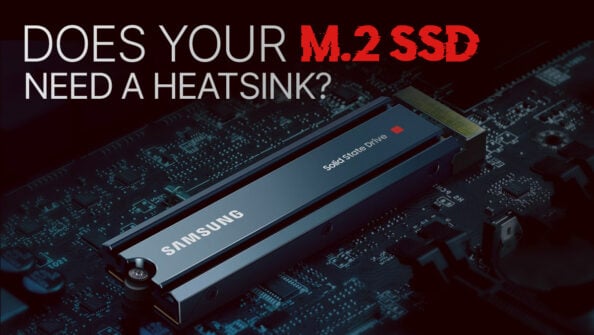
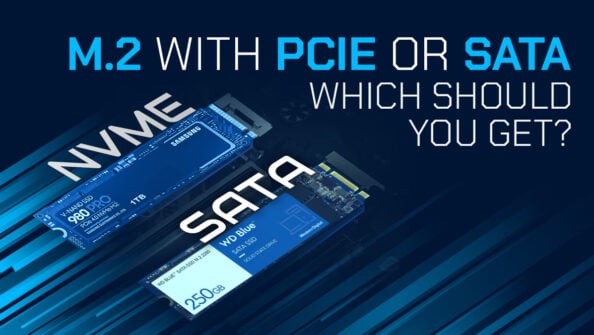

0 Comments